Breaking Beta | What are the Anthropometric and Performance Characteristics of Modern Female Climbers?
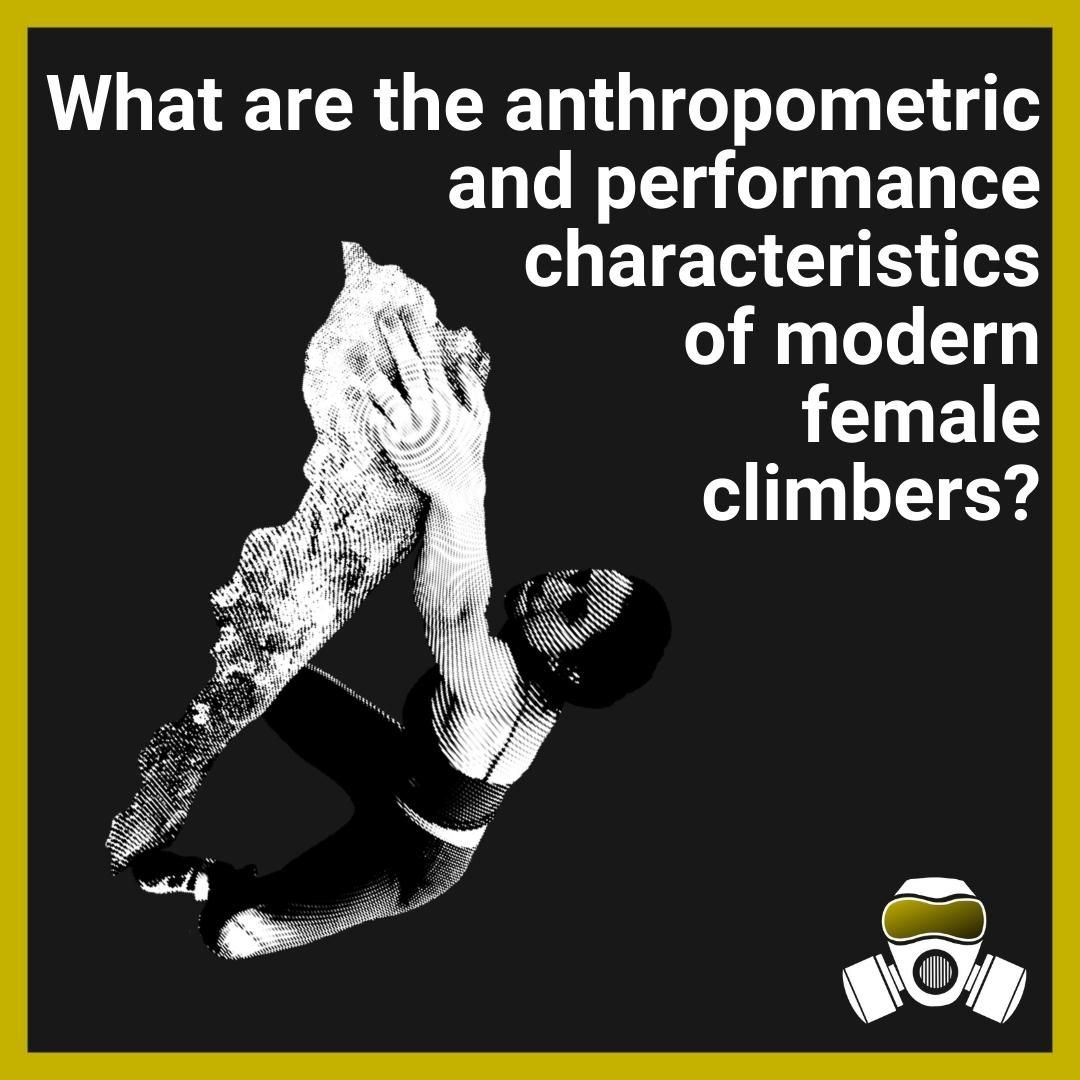
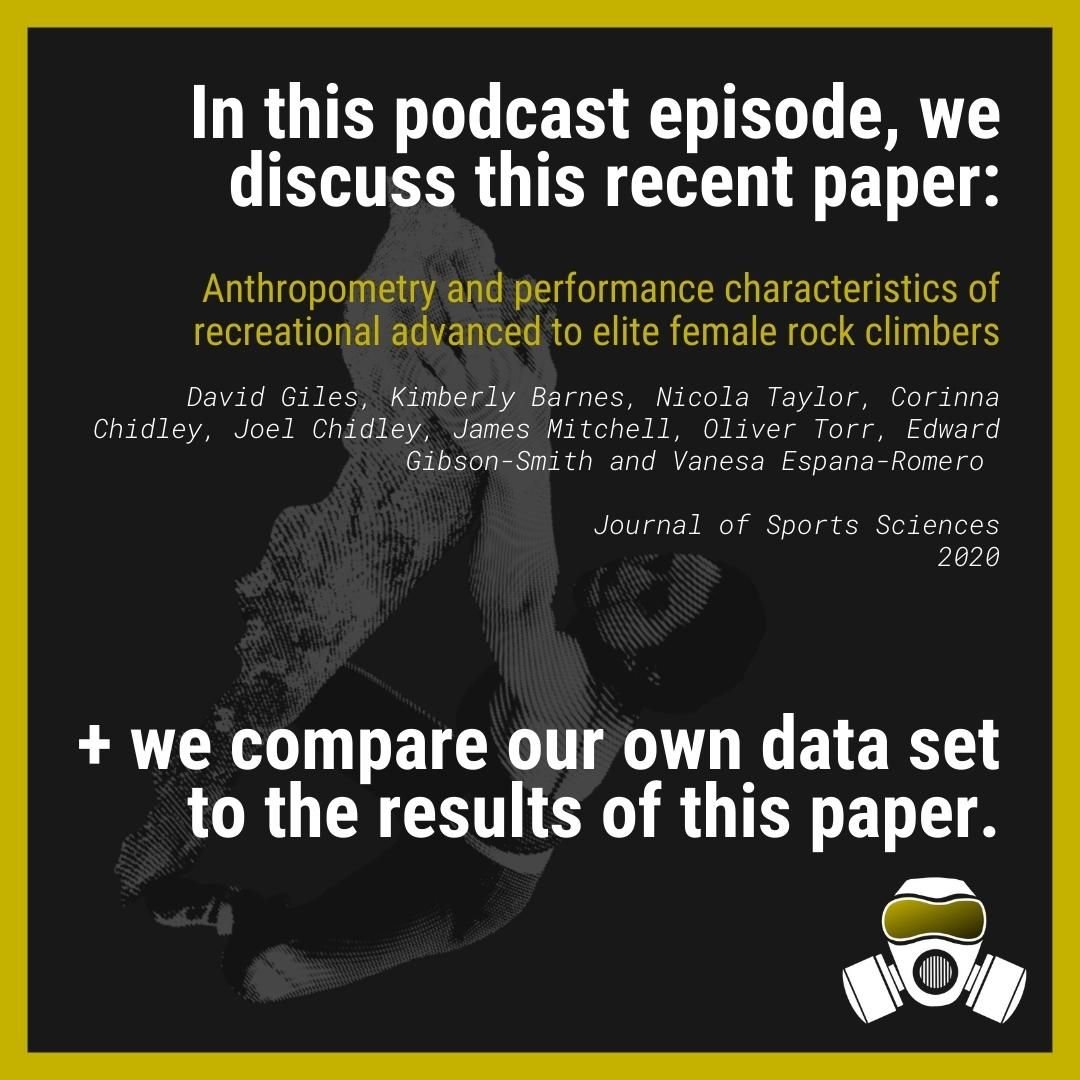
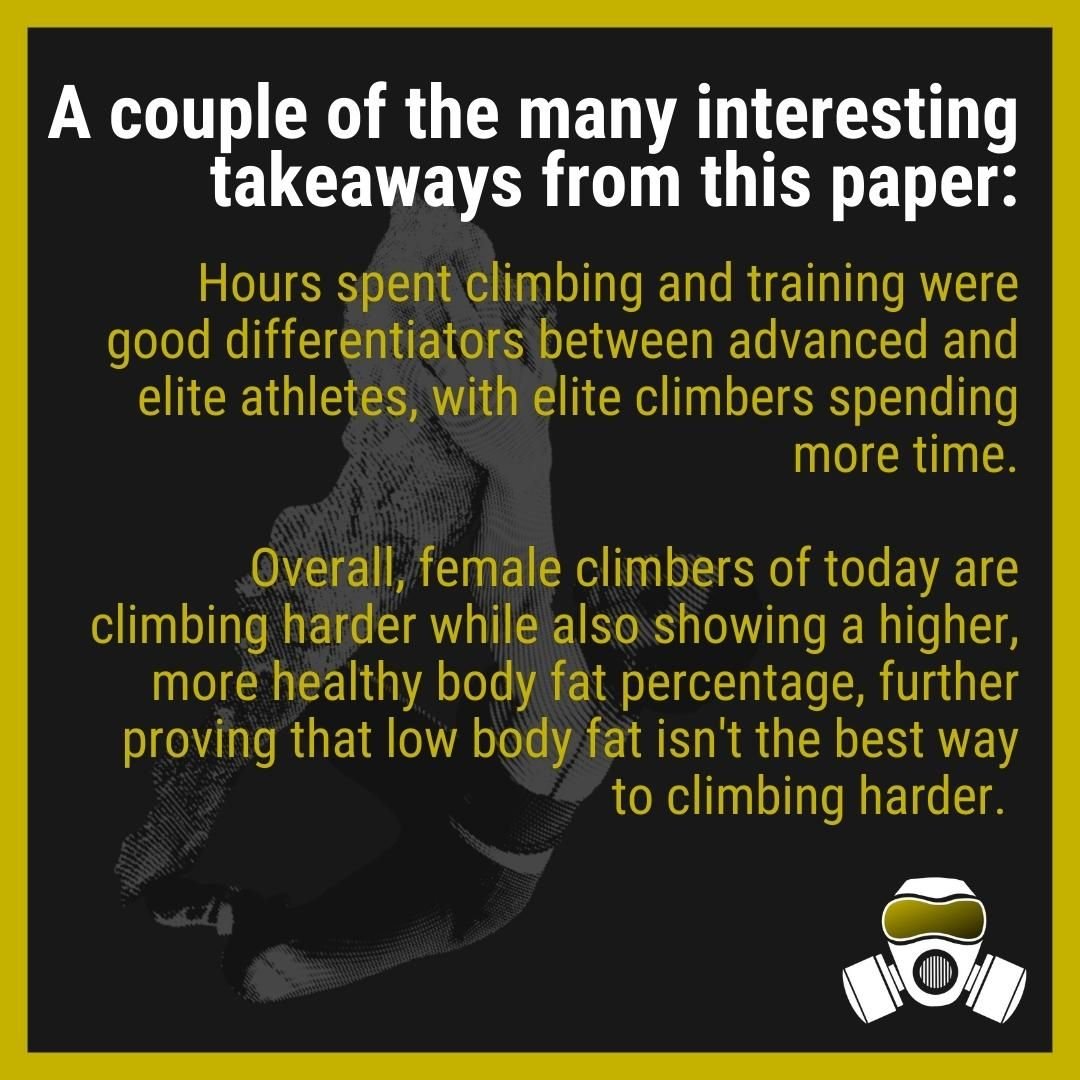


In this episode, Kris and Paul chat with data analyst and fellow Power Company coach, Dale Wilson, to examine a study that attempts to collect and compare data from female climbers:
Anthropometry and performance characteristics of recreational advanced to elite female rock climbers
Authored by David Giles, Kimberly Barnes, Nicola Taylor, Corinna Chidley, Joel Chidley, James Mitchell, Oliver Torr, Edward Gibson-Smith, and Vanesa España-Romero; published in the Journal of Sports Sciences in August, 2020.
They’ll discuss the data that was collected from each climber and which measurements seem to be indicative of climbing performance. They’ll talk about some of the correlations revealed and Dale will explain how these compare to trends he’s seen in the Power Company’s data on female climbers.
New episodes of Breaking Beta drop on Wednesdays. Make sure you’re subscribed, leave us a review, and share!
And please, tell all of your female friends who say they are too short to be a good climber that you have the perfect podcast for them.
Got a question? Comments? Want to suggest a paper to be discussed? Get in touch and let us know!
Breaking Beta is brought to you by Power Company Climbing and Crux Conditioning, and is a proud member of the Plug Tone Audio Collective. Find full episode transcripts, citations, and more at our website.
FULL EPISODE TRANSCRIPT:
Kris Hampton 00:00
Season Two of Breaking Beta is brought to you by Gnarly Nutrition. After the episode, use the code BETA15 for 15% off of your next order at gognarly.com or click the link in your show notes to have the code automatically applied. Gnarly Nutrition: Push your possible with science-backed, delicious sports nutrition
Breaking Bad Audio Clip 00:25
Have you thought any more about what we discussed?
"Thought any more" meaning reconsidered?
So show me the flaw in it.
Flaws, Skyler. Flaws, plural not singular. And where do you want me to start?
Kris Hampton 00:45
Hey, I don't love this situation, all right, that you put me in. However, let's just stick with what makes sense here.
Kris Hampton 00:54
Paul, we've been doing a lot of talking about theory lately, so let's just stick with what makes sense here. And that's, in this case, numbers.
Paul Corsaro 01:04
I like it. We've got one paper. We're looking at one study. We're not having to dive too deep down the rabbit hole. I'm all about it.
Breaking Bad Audio Clip 01:11
Simplifying, it's a good thing. Today, the paper that we're looking at is called "Anthropometry"....I think that's how you say that word. I've heard people say it several ways but "Anthropometry and performance characteristics of recreational advanced to elite female rock climbers" Authors are David Giles, Kimberly Barnes, Nicola Taylor, Corinna Chidley, Joel Chidley, James Mitchell, Oliver Torr, Edward Gibson-Smith and Vanesa Espana-Romero. A lot of names we've seen quite a bit over the season, which is great. I love seeing those collaborations. It was in the Journal of Sports Sciences 2020. And the purpose of this paper essentially is to number one, explore differences in experience, anthropometric and performance characteristics between three ability groups of experienced female climbers and two, to determine which of these characteristics best explain the variability in self reported sport and bouldering climbing performance. I think I said that correctly.
Paul Corsaro 02:17
Checks out. I'm reading it. Looks great.
Kris Hampton 02:20
All right, let's, let's jump into this thing.
Breaking Bad Audio Clip 02:23
You clearly,don't know who you're talking to so let me clue you.
Paul Corsaro 02:28
I'm Paul Corsaro
Kris Hampton 02:29
I'm Kris Hampton.
Breaking Bad Audio Clip 02:31
Lucky two guys, but just guys okay
Paul Corsaro 02:34
And you're listening to Breaking Beta,
Kris Hampton 02:37
Where we explore and explain the science of climbing.
Breaking Bad Audio Clip 02:40
With our skills, you'll earn more than you ever would on your own.
Breaking Bad Audio Clip 02:46
We've got work to do. Are you ready?
Paul Corsaro 02:49
I am so ready. The sun's down. It's apocalyptically hot in Chattanooga.
Kris Hampton 02:54
Hahaha
Paul Corsaro 02:54
I've been hiding from the sun for two days now. We're good. It's like 95 degrees. It feels like a you know, cold snap here. We're good to go. How about you?
Kris Hampton 03:03
Man, I was gonna I was gonna ask you how hot it was there because I was about to say, "It's hot here, so I'm ready." and I know it's way hotter where you are.
Paul Corsaro 03:12
Hey, it's hot, but it's humid, so we're good.
Kris Hampton 03:15
Yeah, you are crazy humid down there. My brain does hurt a little from talking about embodied perception and focus of attention theories, so I'm definitely ready for something that at least seems more concrete. And we are joined again by our esteemed colleague, coach and data analyst Dale Wilson. Are you feeling ready, Dale?
Dale Wilson 03:38
Super ready. So ready
Breaking Bad Audio Clip 03:39
Good. Being being a guy who I imagine can find comfort in the exactness of numbers, would you call them concrete? Is that a fair description?
Dale Wilson 03:49
Would I call them concrete? Oh, man, I think it's too late for this. I'd call concrete concrete.
Paul Corsaro 04:02
Hahaha
Kris Hampton 04:02
Hahaha
Dale Wilson 04:03
They are comforting numbers. I'll leave it at that.
Paul Corsaro 04:05
Okay
Dale Wilson 04:05
They are comforting. We're off to a running start. Haha
Kris Hampton 04:08
Oh, I absolutely accept that answer. Paul, how about you run us through the methods?
Breaking Bad Audio Clip 04:14
In a scenario like this, I don't suppose it is bad form to just flip a coin.
Paul Corsaro 04:22
Cool. So this all happened it seems like at the Women's Climbing Training Symposium in Sheffield, United Kingdom around February 2019. The subject number was around 50....or not around.... it was 55 individuals, all women.
Kris Hampton 04:37
Numbers are concrete, Paul, not around. Haha
Paul Corsaro 04:40
That's right. Dale's throwing me off man. But yeah, so 55 individuals, all female. The general performance characteristics of this group was from you know, VO to V9 and 10c to 13c. I'm going to break that down in a little more detail as we move into these methods. But so these 55 individuals were invited to participate in the study as part of this workshop during the Women's Climbing Training Symposium event. And so what they did is they took these individuals and split them into three different groups based on their self reported maximum redpoint ability of their preferred discipline and then they looked at a bunch of different measures, so including height and arm span, body mass, skinfold thickness, forearm volume, adductor flexibility, shoulder mobility, upper and lower body power, and then finger flexor strength. And they looked at all these in random order. But after the self reported climbing ability, they broke these, these individuals into three different groups. We had your advanced lower, which consisted of 13 people. Their sport climbing onsight, they used the IRCRA measure, so around 13.6, which breaks down to 10d/11a, their sport redpoint, which is 15.9, which gives us around 11c if we're looking at the Yosemite scale and then their boulder onsite was a, you know, around 16, which gives us around V3 and then their boulder redpoint, which gives us V3/V4, so that was the advanced lower group, and there are 13 people in that group. There was also an advanced higher group, which if we look into the IRCRA measures, their sport onsight was around 14 and a half, which gives us 11c, 11a/b. Their sport redpoint was around 16 and a half, which gives us 11c/d. Boulder onsight was close to 18, which gives us around V4 and their boulder redpoint is around 19, which gives us close to V5. And then finally, there are 14 of this overall 55 individuals who are the elite, which gives us our sport onsight around 16 and a half, which gives us 11c/d , sport redpoint, which gives us around 12 b/c or 19 and a half if we're going by IRCRA measures. And then their boulder onsight, V4 V5. If we go back to IRCRA 18 and a half, and then boulder redpoint, around V6 V7, which is close to 21 on the IRCRA scale. Again, there's some blurry zones there. There's always going to be blurry zones, just trying to give you all a rough approximation of where we're at. So what they did is they looked at all these measures, which is which just to review, height and arm span, body mass, skinfold thickness, fore arm volume, adductor flexibility, shoulder mobility, upper and lower body power, and then finger flexor strength. And they just looked at these measures and said....and explored if that related to explaining where these people fell in these groups and how hard they climbed.
Kris Hampton 07:50
Yeah, and they collected a health history and climbing experience, things like that beforehand. I'm curious, Paul, I didn't see anywhere in the paper. I wonder why they're not using the the the levels that it breaks out to in the IRCRA scale, which is like advanced, elite, higher elite. But there is no lower advanced and higher advanced. I wonder if I wonder why they didn't just stick to the same name that that scale already calls them.
Paul Corsaro 08:26
I wonder.... so this what? This is a .........2019 paper or am I just wrong there?
Kris Hampton 08:32
2020 I think
Paul Corsaro 08:32
2020. Okay, yeah. So yeah, that is a really good question. Because the paper
Dale Wilson 08:37
It's almost as if the grading scales are difficult to define in a concrete way. That's strange
Kris Hampton 08:46
Hahaha. You don't say Dale. Those numbers aren't concrete?
Dale Wilson 08:49
Almost like it's a little subjective and maybe needs occasional revising for different purposes.
Kris Hampton 08:56
There's also a point in the methods I just want to point out while we're still here, that I thought was interesting that they're they took the redpoint and onsight number from the past six months. And that also bucks the trend
Dale Wilson 09:10
The 3-3-3
Kris Hampton 09:11
The 3-3-3 rule that the IRCRA put forth. So I'm just curious about these things. I would love to ask these folks what those differences were and why.
Paul Corsaro 09:21
We just got to keep people on their toes. We need to change it every year, right?
Kris Hampton 09:25
And I'm not a fan of the 3-3-3 rule, so I'm not mad about it. I'm just curious.
Paul Corsaro 09:30
Yeah. One thing I really liked about the methods section of this paper is they had pictures explaining every single test which is great.
Kris Hampton 09:39
The pictures were great, actually
Paul Corsaro 09:40
We don't have that sometimes.
Kris Hampton 09:42
Hahaha I know.
Paul Corsaro 09:43
You know and I've talked about this in previous papers where you know, I highlight a sentence I'm like, "Okay, this is the craziest sentence I've ever read and I have to sit and think about what you actually mean by the sentence." If you look at these pictures, you know exactly what they did to test it. You know how it went down and you are like, "Okay, cool. This makes sense. I know what they're looking at, how they explored this and there's no ambiguity in my mind when I read this." So I thought that was something good about this methods section.
Kris Hampton 10:11
Yeah, and it's a pretty big battery of things that they're checking, but they all they all make sense in, you know, in a climbing context in some way, shape or form. So, I do think it's an interesting set of things to look at.
Paul Corsaro 10:25
Yeah.
Kris Hampton 10:27
All right, let's, uh, let's take a quick commercial break. Some words from our sponsor, Gnarly Nutrition, and we will be right back
Breaking Bad Audio Clip 10:35
Please, I really need a break here. Okay?
Kris Hampton 10:41
Let's be honest for a second. I'm not getting any younger, or less stubborn. And as I approach my 50s, with no plans to shelve my desire to continue climbing harder, I have to put a premium on products that are trustworthy, high value and easy to implement. With careful use of Gnarly Creatine, Collagen and Protein, I can get in more quality workouts with more power and that means more and harder climbs. Win, win, win.
Breaking Bad Audio Clip 11:10
Look it up, it's science
Kris Hampton 11:12
Use code BETA 15, that's b e, t, a one five, for 15% off of your next order at gognarly.com or click the link in the show notes to have the code automatically applied. Gnarly Nutrition: Push your possible with science-backed, delicious, sports nutrition.
Breaking Bad Audio Clip 11:31
Yeah, science!
Breaking Bad Audio Clip 11:35
Let's all get back to work for Christ's sake, okay.
Kris Hampton 11:38
All right, we have returned. We're going to get into the results found in this paper. Just before we even start in these results, were either of you surprised at the findings? I'm just curious,
Dale Wilson 11:48
Not entirely. There's a few kind of cool measurements in here that I want to see but I also want to see it like broken down by sex not just inside of like, not just inside of the female group.
Kris Hampton 11:59
Sure
Dale Wilson 11:59
So one of the like hypotheses that you like frequently hear in terms of like, there's a strength discrepancy for grades where like a lot of women's strength metrics for the same grade like are significantly lower than like men's for that. And there's been this hypothesis thrown around that it's because they have like, significantly superior lower body mobility, like hip mobility, shoulder mobility, things like that. And I was curious if they could do like a one way ANOVA or something like just between the between like, sex groups to kind of see that. So I wanted to see that but that's obviously outside of the scope of the paper. But yeah, kind of like, got me jonesing for seeing that in the future, which I'm sure they're gonna release at some point.
Kris Hampton 12:43
Yeah, totally. I sort of thought the same thing. Paul, were you surprised by anything in here?
Paul Corsaro 12:48
Man, not particularly. I mean, we've done a good amount of these types of papers so far and it seems we are coming into a consensus, which is good. It's why we look at all these papers, right?
Kris Hampton 12:59
Yep, exactly, exactly what I thought. I wasn't really super surprised. Let's look at some of the general findings here. So generally speaking, though there's quite a bit of variation, they see that as the ability level rises, age goes down, but experience goes up. So I think that's fairly expected. It doesn't mean that older or newer climbers can't get good. But the younger climbers who started earlier are going to have the advantage most of the time. It's hard to dispute.
Paul Corsaro 13:32
I think that shows like an interesting sociological side of our sport, right? You know, right now we're starting to see where the teams are starting younger. Kids are starting younger in climbing, so it kind of makes sense. People who are exposed to this when they're, I mean, hell, we have people in Chattanooga, who are starting the climbing team when they're five or six years old.
Kris Hampton 13:50
Right
Paul Corsaro 13:50
I'm probably exaggerating, but probably not.
Kris Hampton 13:53
I don't think you are.
Paul Corsaro 13:55
Yeah
Kris Hampton 13:55
I think that's true.
Paul Corsaro 13:56
So it makes sense that you're going to see these higher level climbers start to show up as a younger age. It just so I don't think that shows anything, maybe informative about performance characteristics. I think that's more of a sociological point in my opinion.
Kris Hampton 14:11
Yeah totally. I also, I also think it's important to mention, you know, based on this note that it doesn't necessarily mean that they're better climbers. We're just looking at a redpoint here for the last six months. So it just means that they've redpointed higher, which could be a result of having more time, having fewer responsibilities. You know, if you're a younger climber, a lot of that's going to come into play. So you also have to keep that in mind. Climbing hours per week is the only variable that differentiates between the advanced lower and advanced higher climbers, which I thought was really interesting and uh, you know, and could be potentially taken the wrong way like "Oh my god, I'm already at the gym 30 hours a week. Now I need to be there 45!"
Paul Corsaro 15:05
If you want to get better, climb nine days a week. It's the only way.
Kris Hampton 15:07
Hahaha.
Dale Wilson 15:09
On the converse side, it's becoming like, you always hear so much now about how dangerous volume is and it's like, people show up and like, do like two double unders and then try their project for five minutes and then leave.
Paul Corsaro 15:20
Haha
Kris Hampton 15:20
Totally
Dale Wilson 15:22
It's like, "Oh, man, if I didn't have it in those five minutes, it's gone." So I mean, kind of a joke, but also like swinging both ways on that.
Paul Corsaro 15:29
That's a new MED program right there, minimal effective dose. Three double unders, try your project, go home. That's it.
Kris Hampton 15:35
I just, I just come into the gym, and I stare down my project, and then I call it done.
Paul Corsaro 15:40
Hahaha. The most minimal effective dose, MMED
Kris Hampton 15:43
Haha. You know, and that leads us right into the next one, which is time spent training for climbing was significantly greater for the elites than for either advanced category. And, you know, again, I think this, this makes total sense. Of course, if you're, if you've spent more time training, especially since these elites are younger, they have more experience, you know, they're getting more movement time in, and they're also training for climbing. That's going to make a big difference.
Paul Corsaro 16:15
And you know, intention and focus are always you're gonna get more out of that time if you go into things with a plan too
Paul Corsaro 16:22
Exactly
Paul Corsaro 16:23
Yeah.
Dale Wilson 16:24
Also the like skill aspects. So for like, their, like upper body power, they're doing the like, explosive campus slap portion of that. It's like, I think, if you're, if you're not pretty experienced with like campus boarding, it's kind of hard to, like have like a good coordinated control of that kind of movement.
Kris Hampton 16:41
Totally.
Dale Wilson 16:42
It's like, if you are, the more exposure that you have to training time, the more likely you are to have already be like built up that skill set in that area.
Kris Hampton 16:51
Yeah, absolutely. Especially in modern gyms.
Dale Wilson 16:55
Yeah.
Kris Hampton 16:57
I thought this was was interesting and, you know, not surprising, but interesting. And I think it's great to have out there in a study. There were no significant differences in height, body mass, BMI, forearm length, arm volume, leg span, or ape index, between any of the groups. And it's just not the deciding factor, like it might be in some other sports. And, you know, I think we that just has to be encouraging for people of all shapes and sizes, that it's possible to be an elite climber and be still in a fairly wide range.
Paul Corsaro 17:34
Yeah, 100%. And I think, you know, we're starting to see, you know, more occurrence of this happen in the climbing community, in realizing these things and promoting more healthy behaviors along these fronts that, you know, maybe how you look, or the percentage of your body fat isn't the most important thing.
Paul Corsaro 17:54
You know, back in the day that, you know, back in the back in the day, but maybe before I even started rock climbing, like that was part of it, right? You know, people wanted to be as light as possible to a dangerously healthy perspective of that. And it's good to see research that shows that that's not the way and we can be healthy and robust and people can come into this as they are and still do well.
Kris Hampton 17:54
Right
Dale Wilson 17:55
Yeah, I thought that was neat also, to kind of like match with our data is that we've never had like, significant differences in like BMI, like using BMI as a measure, like between groups and using it as like a predictor is poor. I think it's like it's a bit of a trap, because it's intuitive, that you think like, "Oh, if I'm, like, smaller than my strength to weight ratio will increase". It's like, well, yeah, not if you can't actually get your sessions in and can't generate power and you haven't, like, looked at a grain in six weeks or something,
Paul Corsaro 18:53
And in terms of BMI, like BMI is pretty terrible for most points overall
Dale Wilson 18:57
Yeah.
Kris Hampton 18:57
Yeah
Dale Wilson 18:58
Pretty, pretty bad derived value
Paul Corsaro 19:00
BMI just probably shouldn't be included moving forward. But that's my opinion. But
Kris Hampton 19:06
I agree. They do make the mention in the discussion portion of this paper, which I think is great that they... when comparing this paper to past papers, specifically, I think 1993, the level of climbers has risen dramatically and at the same time, the body fat percentage reported in 1993 was substantially lower. So the while the body fat percentage has gone up and female climbers, their level of climbing has also risen dramatically. And I think this indicates that female climbers, at least the ones looked at in this study, are trending toward a, you know, a more healthy body composition. And I think that's a great takeaway to remember that the strength is a big part of that strength to weight ratio.
Dale Wilson 19:52
They're chasing what matters as opposed to things that don't matter and are probably pretty dangerous to pursue long term.
Kris Hampton 19:59
Yeah. Lower body fat doesn't mean that you're going to perform better.
Breaking Bad Audio Clip 20:03
Look it up, it's science.
Paul Corsaro 20:05
Yeah, I think that, yeah, that 93....the 1993 body mass node is more of a reflection of the symptom of the times and maybe not the cause of performance. So you can't get consider the symptom and then also not think about the cause, either. So,
Kris Hampton 20:21
Yeah absolutely.
Dale Wilson 20:22
Yeah. Looking at the... I think it is table three in the results. They include, like the one way ANOVA P value for like, body fat percentage and it was like .026, I think where it's like smallest in the elite group, versus the like, two advanced, lower and higher, groups. But again, that's one of those things where they're the age for that group is also younger.
Kris Hampton 20:45
Right
Dale Wilson 20:45
So it's like, how much are we...yeah... like, there's, again, like a compounding factors here, where it's, you can't just say that it's a simple one to one relationship, or like, control everything that's directing that. Sorry, I just wanted to point that one on there, too.
Kris Hampton 20:58
No, I think that's a great catch there. You know, my body fat percentage was definitely lower when I was 14 years old than it is now. But But I'm absolutely stronger now.
Paul Corsaro 21:09
Some of these people were negative two years old in '93, so
Kris Hampton 21:15
Haha. They also mentioned that or they look at, you know, flexibility, shoulder and hip mobility, as well as lower limb power, at least how they were measuring it, were not significant between the groups. There was no significant difference between the groups. That flexibility part actually is one of the critiques I have. You know, we keep....papers...we keep seeing papers, Paul, that are looking at trying to find this link between flexibility and climbing ability. And, you know, once again, in this paper, they reference back to that 2009 Nick Draper paper that we looked at in Season One, and say, "Oh, maybe we just need to change the modality". And I just can't make sense of why we aren't seeing the Adapted Grant Foot Raise from that study in more studies. It's like people are just skipping right over it and looking for a new modality and not finding anything. So I don't get it. It doesn't make sense to me.
Paul Corsaro 22:22
It kind of flies in the face in a lot of research where you build on the previous ones. Like the Adapted Grant Foot Raise is like, "Oh, we need to use this and build on this." This is the one of the few that seems to show promise, right and just we don't see it.
Kris Hampton 22:37
Yeah, I'm mind boggled that, that it's just not showing up.
Breaking Bad Audio Clip 22:41
Leave that for smarter minds than me. Science is a mystery.
Paul Corsaro 22:45
And another mystery to me is for the lower limb power, like I I'm not a huge fan of how they looked at this. I think there could have been a more robust way to look at it. The counter movement jump with the hands on the hips. Sure, that's completely lower body. But when in climbing is a climbing move only lower body? We've seen the discus throw technique, we pull with the arms and drive with the legs. I think it'd be interesting to see both you know, the counter movement jump with the hands on the hips, but also like, you know, your standard counter movement jump where you drop into the jump, you drop into the bottom of the jump, your hands go behind you in the jump and throw your hands up. Like I think that would at least be interesting to look at because climbing never happens with just the lower body unless you know you're doing a run and jump and then you got to grab shit.
Kris Hampton 23:34
And we....Dale, didn't we....haha....Dale, didn't we look at a standing long jump?
Dale Wilson 23:39
We did. Yeah. And we looked at it with with including, like arm generation inside of it or without arm generation. We didn't really find I didn't find any significant differences, or significant correlation inside of that analysis.
Paul Corsaro 23:52
Well I rest my case that I'm wrong.
Dale Wilson 23:54
So I mean,
Kris Hampton 23:55
Haha. Not necessarily.
Dale Wilson 23:58
Not necessarily, but I mean, yeah, I mean, it's something we need to revisit. We had a smaller data collection when we were doing that also.
Kris Hampton 24:07
Yeah, I you know, and I mentioned this in a previous episode, Paul, that I would be interested in seeing the power slap done with the legs in play as well, as a foot on kind of a thing, just to see how that coordination of using leg and arm power at the same time, as we do in climbing most of the time. We'll see if it shows up.
Paul Corsaro 24:29
Yeah.
Dale Wilson 24:30
100%.
Kris Hampton 24:31
And speaking of the power slap, you know, we're seeing this over and over, the power slap and finger strength proved to be good differentiators between the advanced and the elite groups. I think every study we've looked at that tries to you know, find the differences between climbing ability says finger strength and power slap.
Paul Corsaro 24:54
Which is cool in a way you know, like you're starting to get consensus. We know at least a general direction to take things if we're going to use the evidence based moniker behind our coaching practices. Each of the two things we need to pursue from a strength and conditioning perspective.
Kris Hampton 25:11
Yep, I think so. Dale, is this what our... I know, for men in particular or for, you know, a mixed group, our data was lining up with this as well, though we weren't looking at necessarily just the power slap at that point, we were looking at weighted pull ups, and the weighted pull ups and the finger strength were showing to be good differentiators as well. Is that correct?
Dale Wilson 25:34
Yeah, we definitely saw the campus max reach power slab test as a significant predictor for boulder and sport climbing performance. More so on the boulder side, than the sport climbing side.
Kris Hampton 25:47
I think they found the same thing here
Dale Wilson 25:50
I'm pretty sure also. Yeah, so in their first model, which is their unadjusted...yeah, they have a significant difference there for boulder, but not for sport. And they don't get it really until they're at their like, third iteration of models.
Kris Hampton 26:10
Okay, let's talk about those iteration of models, because I think these are kind of kind of fun.
Dale Wilson 26:15
Yeah
Kris Hampton 26:15
Use, they use a linear regression analysis to explain the variance and to show how improvement in these measurements is associated with an increase in ability, which I think is kind of fun. But can you explain to us Dale, what a linear regression analysis is, and how it then explains the variance?
Dale Wilson 26:37
Sure. So linear regression is a way of modeling a relationship between two variables. So like, if you're trying to paint a mental picture of it, if you picture like a x axis, y axis, and a scatterplot of dots on it, you are taking that and trying to draw like a line of best fit through those points. So you can have, in like a simple, simplest form, like you could have like a single x variable trying to predict a single y variable. You can also have like multiple X variables going into it, which is what they're showing here, when they're saying like adjusting for like some skinfolds in the second model, or adding in model two plus training per week. And they're adding in like additional variables that point. So it's a way of using a relationship between between two variables to kind of predict one based on one, based on the other. And in the paper they use, and pretty much in general, they use R squared as like their measurement for the quality or like the predictive value of that model. And that's a essentially how much the variance in your x variable is able to or how much of the variance in your y variable is explained by the variance in your x variable.
Kris Hampton 27:59
Got it.
Dale Wilson 27:59
That's probably the easiest way to explain it. I know this is sports science and it's like, it's a little different, but I know that when I first started building, like, we built a bunch of multiple linear regression models, when we were developing the assessment. And the way we went about it in a very similar approach to
Kris Hampton 28:18
Can I just stopped you for a second?
Dale Wilson 28:20
Sorry. Yeah
Kris Hampton 28:20
When you when you say "we", you mean you.
Paul Corsaro 28:24
Hahaha
Kris Hampton 28:24
Dale built them hahaha.
Dale Wilson 28:25
But with incredible guidance from the Power Company team haha. So when we were building these, we got like, I went about it in a similar approach to how they did and I remember showing this to like, or going about, like my methods, and like showing that to other people that like work in statistics and model building. And this is like a very hot button issue, where they talk about it in their statistical analysis.... or assist statistical analysis section where they mentioned that like the, like grading scale, the IRCRA, like scale is still like an integer scale. So it's a little goofy, where we're looking at like, one kind of continuous number, where it's like 1.33945, something like that and then your like, output is like a integer grade number, where it's like, you don't get like 13.5, really. You get like 12, you get 14 and there's no, there's no like in between, really, inside of that. So from like a, like, actual mathematical methods perspective, it's a little bit it's a little strange. So like, you're never going, you know, going into it essentially, that you're never going to be able to explain all the variance in your outcome with your x variable. Like it's just, it's a little strange because you always have that like, break in it if you're using a like linear regression approach. You can use other forms of regression to get around this a little bit, I don't want to completely sidetrack us talking about this,
Kris Hampton 30:06
What you're saying is, in this case, the numbers are not concrete?
Paul Corsaro 30:11
Haha
Dale Wilson 30:11
I'm not even walking into that one.
Kris Hampton 30:13
Hahaha
Dale Wilson 30:15
But they're trying to show that some things are statistically significant and good predictors of outcomes and that they get, they become better predictors, as they add more variables into those models. Which is the same thing that we saw with our data. This can turn into a whole messy thing where people get obsessed with
Kris Hampton 30:37
Yeah
Dale Wilson 30:37
Like, "If I, if I improve my max hang by 20 pounds, I'm going to climb V12." And it makes people think in like a very transactional way and that's they intentionally, like, try to avoid that inside of this paper. They mentioned it multiple times that like, "Climbing is complicated."
Kris Hampton 30:54
Yeah, I think they do a great job of that. They do this cool thing within this section where they say a one centimeter improvement in the power slap is associated with this amount of improvement in your ability level and when I read that, I was like, "Oh, no!"
Paul Corsaro 31:12
You could see people just reading that and then busting out their calculator and saying, "What do I need to do? What do I need to do?"
Dale Wilson 31:19
So that's, that's from the like, regression coefficients. That's their, like, their beta values in the...what is that? Table five?
Kris Hampton 31:27
Mmm hmm
Dale Wilson 31:28
And that's something that's actually like a helpful, like, you have to do that in when you apply linear regression to other messy scenarios like this. So if you have like.....what's a good example?......Say you have an analysis that's looking at like, number of children. Like somebody doesn't have like a one and a half child or something like that. They either have one or they have two.
Kris Hampton 31:49
Haha. Right
Dale Wilson 31:49
So you can, so you need to have like, using the like, beta values, you can then look at, like in a larger group, like say that you only studied like, 30 people, but you're trying to figure out, like, what would happen in a group of 100, you can start to see like long term trends and like, actual, like outcome changes with that, using that information. So that I thought that was good that they included that in that actually. Though it is dangerous, I understood why they were doing it.
Kris Hampton 32:16
Yeah, same, I didn't quite understand it, in the way that you just explained it. But, but I did think it was interesting that they added it in there and also scary, depending on who's reading the paper.
Dale Wilson 32:30
Yeah, just for giggles, kind of in that same section I went and pulled...so there's like a bunch of different ways that you can do regression analysis and what you use it for, and all this fun stuff. But one of the things is, like, we talked about like kind of variance inside of groups and how, like, it's kind of messy to look at variance across like a range of grades because they're, they're kind of in like discrete buckets really. And I thought it would be good to go through, I looked at the like central tendency for our data for like men and women at all the different grades and try to do just an R-squared off of like, or do like a linear regression and get an R-squared score for like, just using the like average from those groups. If you wanted to, like, do something really dumb and trick yourself into thinking that it was like a one for one trade.
Kris Hampton 33:21
Haha
Dale Wilson 33:21
And, like looking at those for women, it's like .93 haha and for men, it's like .94. Like it's an incredibly great predictor on average.
Kris Hampton 33:31
So that means it's explaining all 100% of their ability. Is that correct?
Dale Wilson 33:37
Exactly. Oh, yeah.
Kris Hampton 33:39
Hahaha
Dale Wilson 33:39
Like no. But it's on average. And then it's like when you look at the variances for those groups, like htey're massive. So again, this is a total aside, but it's like, how people can read these papers and see something and latch on to kind of dumb conclusions or bad ways to take it.
Kris Hampton 33:56
Yeah, I mean, I don't think that's a rare thing. I think it's actually a pretty common thing to just latch on to something and run with it. So so I appreciate the the attempt at a nuanced description of a quite confusing, messy thing.
Dale Wilson 34:12
No I think I think they did a great job of like, they mention multiple times, like, "Climbing is complicated. There's a bunch of like other skill aspects and things to... other things to work on." I thought they did a really good job with it. And I, I understand why they applied the.... given the grading scale that they're working with, and the standardization of it, like, here's a simple way that many people could approach it that shows you like that the relationship improves as you add more variables to the model.
Kris Hampton 34:39
Yep. And we've been gathering, like we've mentioned, similar data. Ours differs a little in that we're using a smaller edge for the power slap, and we're doing a 10 second max versus peak finger strength, which is what they're looking at here.
Dale Wilson 34:55
They're also doing it one handed, right?
Paul Corsaro 34:57
Yep
Dale Wilson 34:57
They are doing one handed pulls?
Kris Hampton 34:58
I believe so. Yeah,
Paul Corsaro 34:59
Yeah, pull one arem and they had like a force
Dale Wilson 35:02
Force plate?
Paul Corsaro 35:03
Crane scale analog that they're pulling on and getting the three second.
Dale Wilson 35:07
Gotcha. Yeah.
Kris Hampton 35:08
I'm curious, Dale, now that we have the numbers to look solely at female data, which is something we've been working toward this last year and a half, two years, how does our data ultimately compare to what's found here or what useful can we see in our data by comparing it here?
Dale Wilson 35:29
I mean, we see a lot of the same things when we're looking at physical measurements, like finger strength, explosive power, like these are great predictors, especially inside of bouldering. Let me go back to their table......So both of those things are, like even unadjusted, like, without even including body mass, like those are significant predictors inside of their first like unadjusted model. We see good correlations with those as well, especially for women, both for women and men. But I think it's really important to, like take a long term approach to that again, and like not think of it as another transactional thing, where it's like, "If I get it to increase this much, then I'm going to have this much improvement in performance". But it is like a reminder that, like, we know this. Like getting stronger fingers and being able to jump to higher holds is important in rock climbing, especially bouldering, where it relies on that more.
Kris Hampton 36:27
Yeah, we, when you first put out those numbers saying that the weighted pull up and the max hang, were the best predictors that we were seeing in our numbers, I built the Fingers Plus Proven Plan based on that. But in that plan, I also say, you know, this is meant to supplement regular climbing practice, you know. These are, these are important things. There's also some hip strength and hip mobility worked in there. But it should be in conjunction with actually moving.
Dale Wilson 37:00
Yeah, yeah. Again, going back to like, climbing is complicated and they're looking for, like, what are significant predictors here. But it's, like, it's really hard to come up with like a plan, even looking at that. Like, say that they're significant. Okay, like, how do you go about programming, like improvement in that factor in a way that's like, correct for different people? Because like, between their advanced L group, and their elite group, like that might look entirely different. And where do people fall like inside that group? Are they like getting the highest measurement inside of their group? Are they getting the lowest? Like, how are you going to approach that? It's not like.....it's interesting, and it's good for coaches to obviously think about and for athletes to think about, but it's not, it's not prescriptive and it's not like immediately actionable. And that's not that's not the purpose of it.
Kris Hampton 37:49
Right.
Dale Wilson 37:49
So, yeah, we see, we see very similar, significant predictors, as well as other stuff that they didn't look at inside of this paper, obviously. But yeah, for those measurements, we definitely see significant improvements in those as people progress through the grade scales.
Kris Hampton 38:07
Are we seeing anything in our data that that contradicts this paper?
Dale Wilson 38:13
That contradicts it? Um, I don't think so actually. I'd love to see, I'd love for them to....so our assessment uses, like more sport-specific kind of measurements and I'd love to see them collect more data in that realm include, including like using repeaters and the continuous hang and all that stuff that we also use. I mean, foot-on campus and stuff like that
Kris Hampton 38:40
My guess is that they weren't doing that, because I believe it was a one day symposium. Is that true, Paul?
Paul Corsaro 38:46
I think so. Yeah. Yeah because everything was done from like, 10am to 12pm. Whatever.
Kris Hampton 38:53
Yeah.
Paul Corsaro 38:53
All tests are completed within a two hour window, so
Dale Wilson 38:55
Yeah. That's amazing
Paul Corsaro 38:57
Which is wild.
Dale Wilson 38:57
Yeah
Kris Hampton 38:58
Do the repeaters til failure right in the beginning and blow everybody out. Haha.
Dale Wilson 39:02
Quick, go, go go. Haha
Paul Corsaro 39:05
It's still wild we haven't seen a paper looking at weighted pull ups and climbing performance.
Kris Hampton 39:10
I know. I'm a little baffled by that as well. It doesn't make a lot of sense to me
Paul Corsaro 39:14
And yet we see all this shit on social media, people trashing on weighted pull ups because they're too slow and they don't match climbing performance. And it's like, I feel like I'm...... sorry, I'm about to go on a weighted pull up rant here. Is that alright?
Kris Hampton 39:26
Hahaha
Dale Wilson 39:26
I'm here for I'm here for it.
Paul Corsaro 39:28
This is probably not really that related to this paper, but I've been stewing on this for a long time.
Kris Hampton 39:33
Haha
Paul Corsaro 39:33
But, you know, if we look at the power slap, if we break it down into components, it's how much force can you generate in as little as little amount of time. If we can generate more force, we're going to be more powerful in the same amount of time. A weighted pull up lets us generate more force. We need to look at this shit. That's all. People saying that we weighted pull ups are worthless for climbing need to pump their brakes, at least until we look at them. That's it. All right. That's my rant. I'm done.
Kris Hampton 40:00
Haha
Breaking Bad Audio Clip 40:01
She's like the ant, man. She can lift 100 times her own weight. For real.
Kris Hampton 40:08
Yeah, I agree, Paul. I, you know, it's it's shown up as a good predictor for us and in our data. So it and I think it makes sense. You know, it's one of the oldest ways we hear about training for climbing, you know, it's just a really common sense way to go about it.
Paul Corsaro 40:26
Power is force over time. If you can generate more force and everything else stays the same, you have more power.
Kris Hampton 40:31
Exactly.
Paul Corsaro 40:32
It's math and shit.
Kris Hampton 40:33
Haha. It's math and shit. Look at it up, it's science.
Paul Corsaro 40:37
Haha
Kris Hampton 40:37
While we're critiquing though, I have a pretty petty critique I would like to throw out there and that's that I'm not a fan of the way the word "recreational" is used in this paper. They use it several times that confuses me. And even in the title, it says "recreational advanced". I don't know what the hell "recreational advanced" is. I think it confuses things, doesn't give us a clear way of comparing these findings to other papers. Why not just use the ability levels, the categories laid out by that IRCRA scale? I don't, I don't get it.
Kris Hampton 40:41
Yeah. And you know, these people went to a symposium about training. Like, I think it's a little bit different than "recreational".
Paul Corsaro 41:27
You know, like these people, they take things seriously. Yeah, I agree with that. I didn't think about that.
Kris Hampton 41:27
Yeah
Kris Hampton 41:34
Yeah, they do mention exactly what you just said, Paul, they mentioned it in the discussion. And this is something I tell a lot of the athletes who are like first timers taking our assessment, you know, new clients coming in, that we're almost certainly, and this symposium was almost certainly, biased toward people who really care about training for climbing. So, so it's possible that their numbers are a little inflated, just because they've trained these things up.
Paul Corsaro 42:04
Yeah, interesting.
Kris Hampton 42:05
So I think that's another important thing to keep in mind. Overall, I think this thing was, was interesting. I think it's the you know, they made some really cool points, I think it's great to see finger strength and this power slap really kind of coming out as the big predictors that maybe we could be paying attention to. I hope we find some others as well as we as we continue down this path. I love that they compared it to past papers and are showing that even with higher body fat percentage, the athletes are still performing much better than they were, you know, however many years ago 1993 was. That's when I graduated high school, so to me it was five years ago.
Paul Corsaro 42:51
Haha. Yeah, it's, it's, it's great. It's, you know, it's what we're looking for, right? The growing consensus on certain things we need to pursue. Just... again, I've said, I look at this from a coach perspective, "What are the metrics I need to pursue and improve for the people I work with, and for myself, as a climber?" and the consensus grows, we get more and more stronger evidence for certain things. It opens up paths for other things, but I think we're, like you said, as we work through this process of, you know, we're, what, two and a half season or one and a half seasons in, we're start... things are starting to move to the forefront. And yep, I'm psyched on that.
Breaking Bad Audio Clip 43:33
Yes, science!
Kris Hampton 43:34
Absolutely. Dale, anything else from you?
Dale Wilson 43:40
No. I really liked the paper as a whole. I thought it was pretty detailed. I liked their statistics approach. Yeah, I thought it was I thought it was, like, like sound, like mathematically sound. What they're going through make sense. And I thought that they were really practical in the recommendations from it and their discussion section as well.
Kris Hampton 44:01
Same.
Dale Wilson 44:03
And yeah, to Paul's point, I really think that that is something kind of to be proud of as like a group of climbers overall, like for the sport in general, is that you're really starting to see like, when you get to these discussion sections, it's, it's full of citations to like previous work. And it's, like, very nuanced. It's like, "Here's what we know" and you're seeing it over and over. Like, I feel like we're constantly we always still hear that, like, "There's not there's no research in climbing" and like, all this stuff, and it's like, no, it's it's really starting to develop and these guys are doing really good work with it. And I mean, it's also validating, to, like hear that they're getting really similar results to like what we're finding in our own analysis of our own data, even though it's not published. But it's good to see that like, a lot of a lot of coaching is coming to the same place and it's really getting more sound. It's getting technically better, and hopefully it helps us better serve people going forward.
Kris Hampton 45:01
Absolutely. Dale, thanks again for joining us. This was a lot of fun. I have a feeling it won't be the last time. I think you're just going to become a regular guest on Breaking Beta.
Paul Corsaro 45:13
Yeah, I was about to say like looking at all these tables and stuff, like, you know, I look at them, I try to make sense of them. But in what 30 minutes... you made more sense of this table than the 45 minutes I looked at just the table trying to figure this shit fucking out, so
Kris Hampton 45:29
And certainly there are people out there who are like, "I wish these two yahoos would actually understand what they're talking about." haha
Paul Corsaro 45:37
So I'm glad you're here. Dale, this is great.
Kris Hampton 45:39
Haha. You're filling that void for us.
Dale Wilson 45:41
Happy to help when I can.
Kris Hampton 45:42
You can find both Paul and I all over the internet's by following the links right there in your show notes. You can find Paul at his gym, Crux Conditioning in Chattanooga, Tennessee, where it's 175 degrees right now,
Paul Corsaro 45:54
We may melt in the next day or two.
Kris Hampton 45:56
If you have questions, comments, or papers you'd like for us to take a look at, hit us up at community.powercompanyclimbing.com Don't forget to subscribe to the show. Leave us a review. And please tell all of your female friends who say they're too short to be a good climber that you have the perfect podcast for them. We will see you next week when we discuss chalking up and shaking out and whether science says that it's actually helpful or just a stubborn myth.
Paul Corsaro 46:21
Friction Lab is gonna hate it. We'll see y'all next week.
Breaking Bad Audio Clip 46:24
It's done. You keep saying that and it's bullshit every time. Always. You know what? I'm done.
Breaking Bad Audio Clip 46:33
Okay, you and I, we're done.
Kris Hampton 46:37
Breaking Beta is brought to you by Power Company Climbing and Crux Conditioning and as a proud member of the Plug Tone Audio Collective. For transcripts, citations and more, visit powercompanyclimbing.com/breakingbeta
Breaking Bad Audio Clip 46:50
Let's not get lost in the who, what and whens. The point is we did our due diligence
Kris Hampton 46:56
Our music, including our theme song Tumbleweed is from legendary South Dakota band Riff Lord.
Breaking Bad Audio Clip 47:03
This is it. This is how it ends.





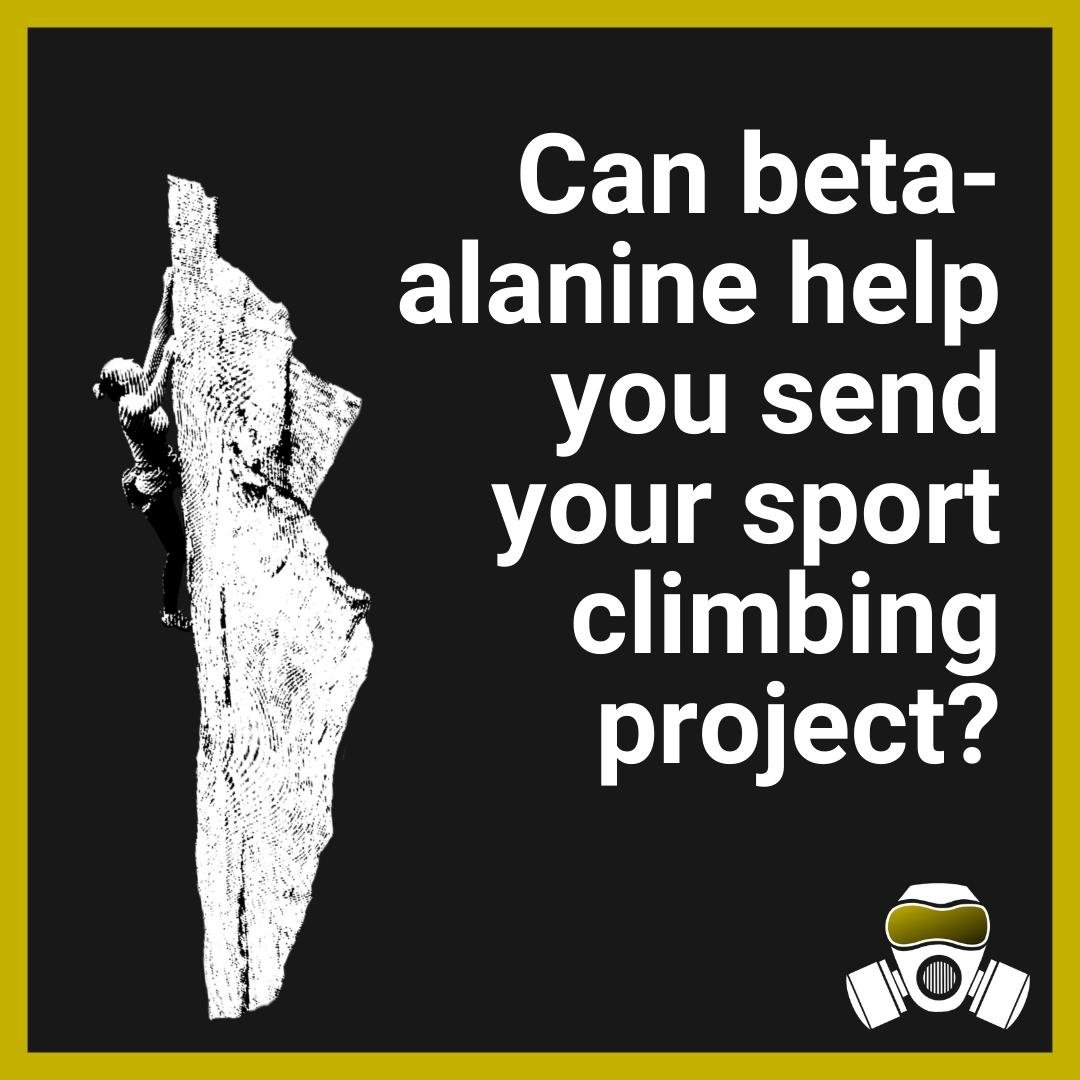

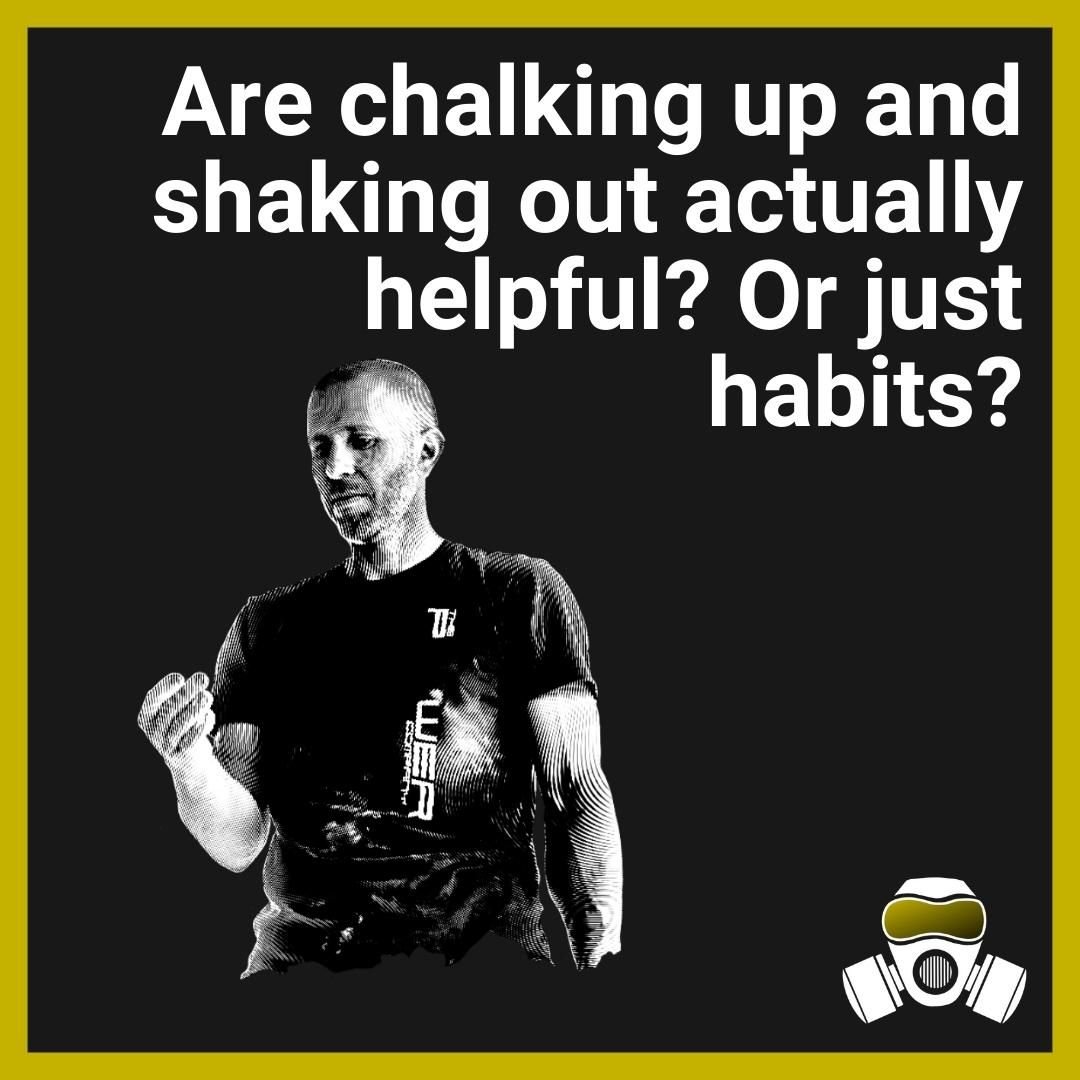


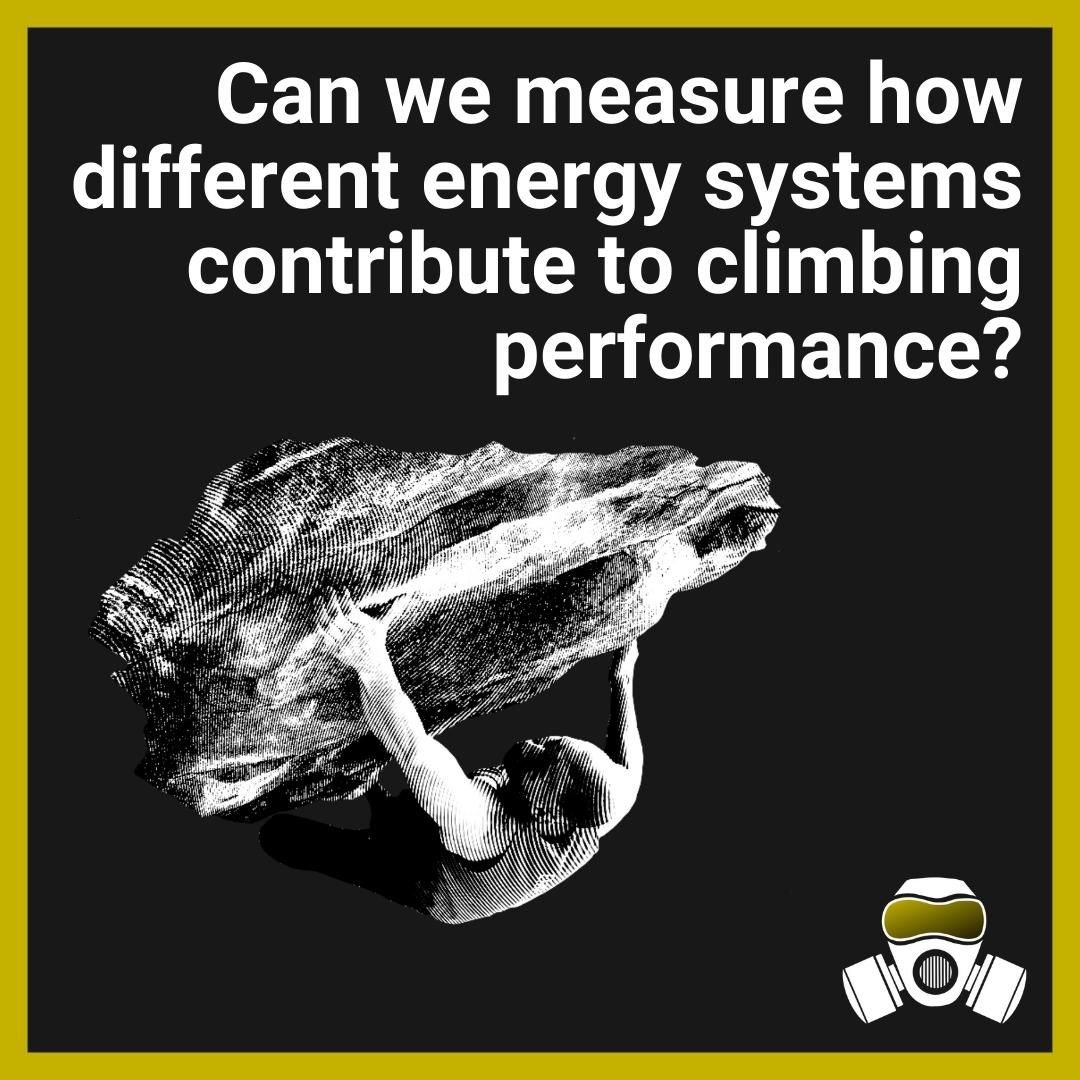
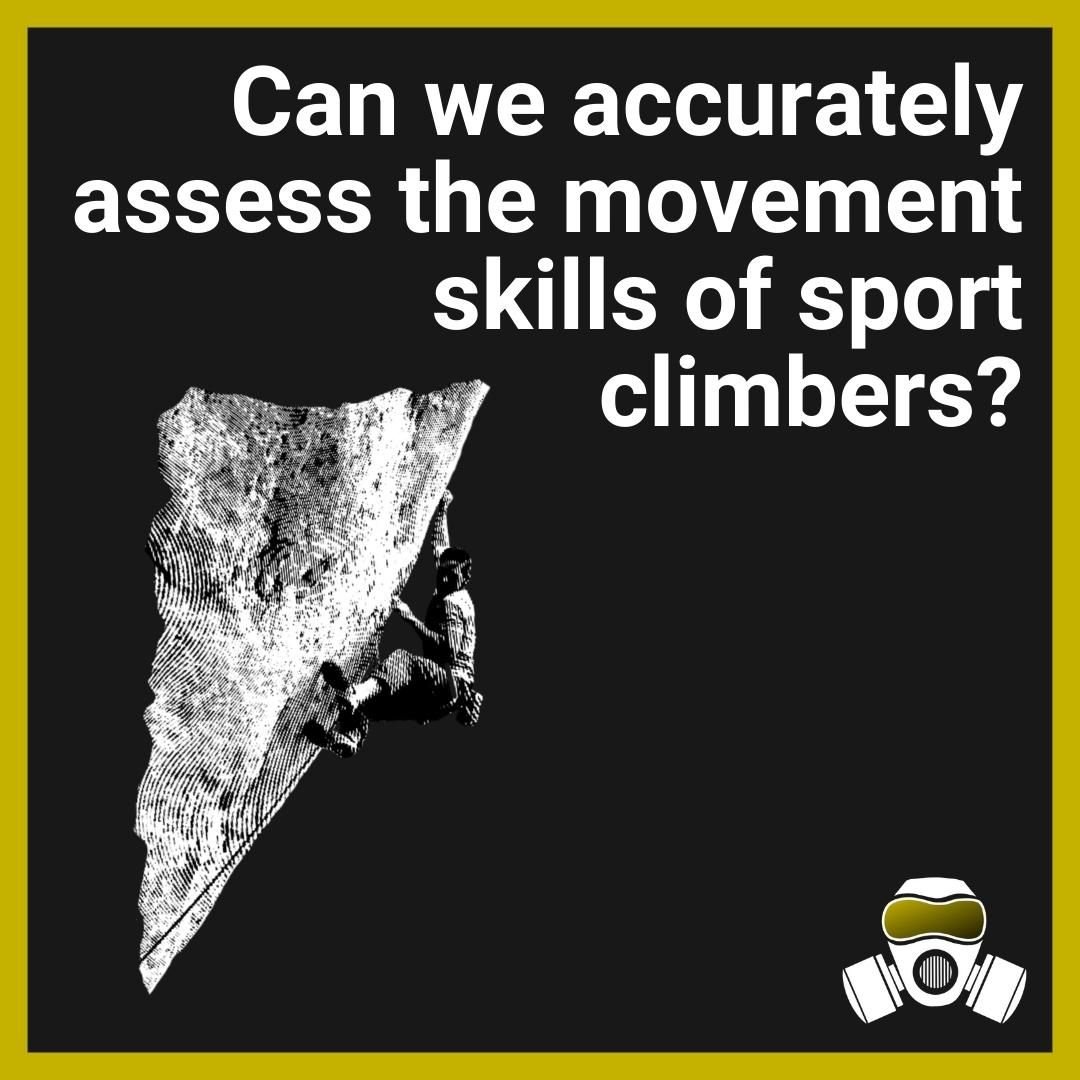
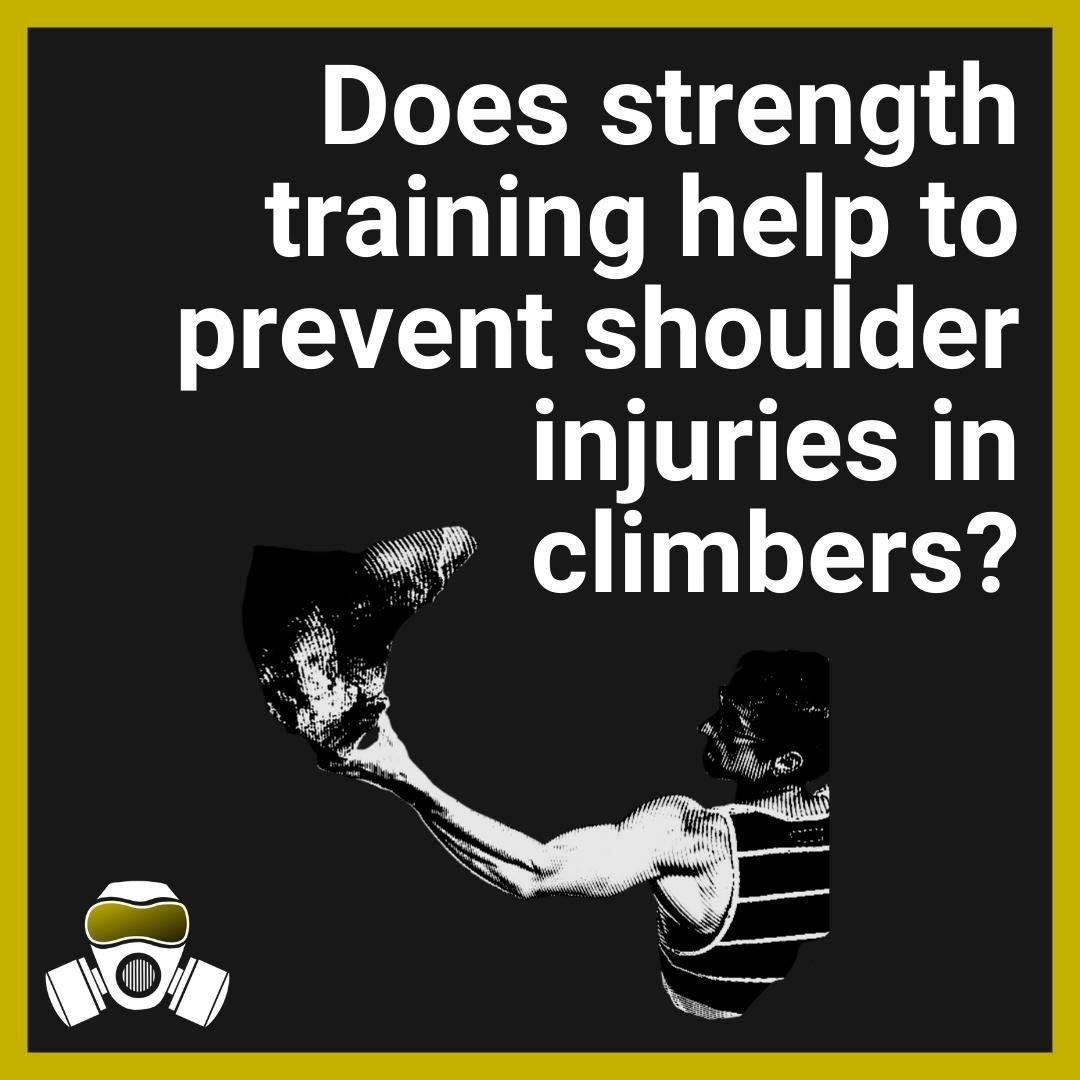











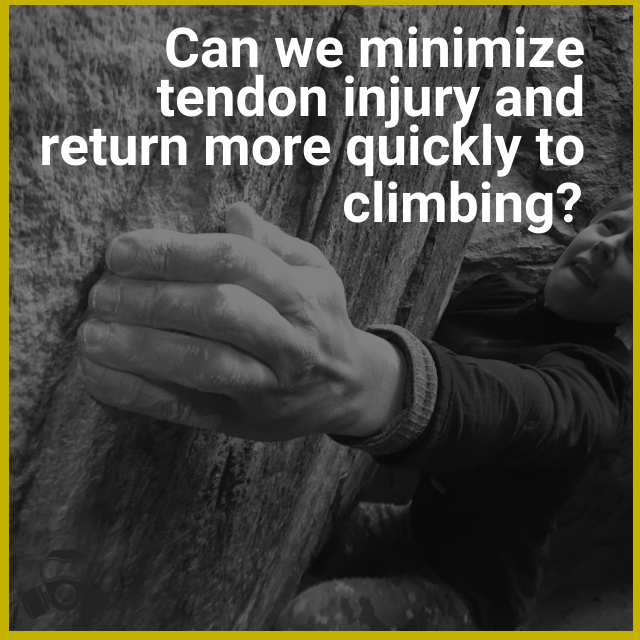
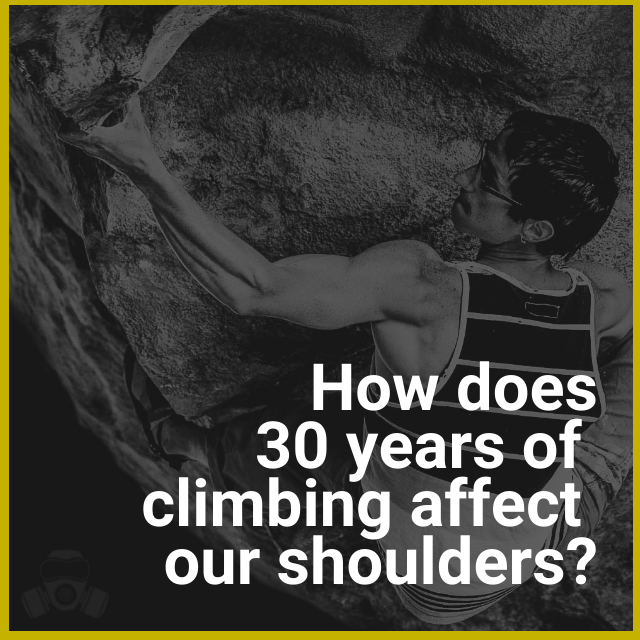

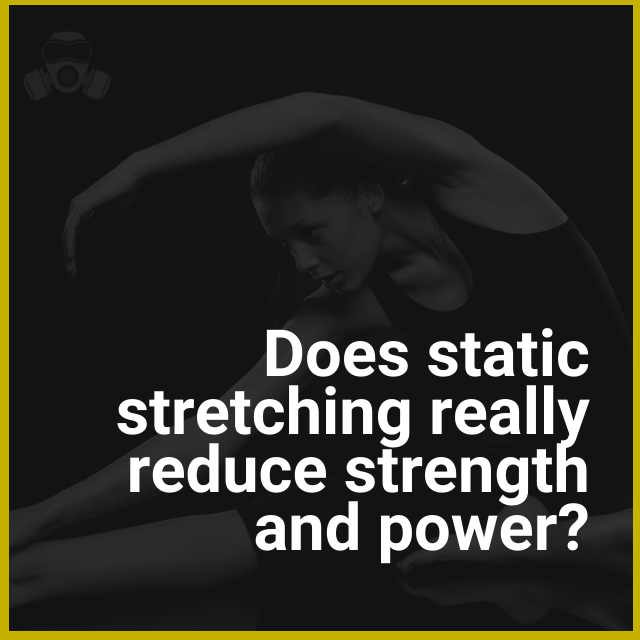



Kris and Paul dig into a paper that presents and then tests a method for measuring movement skills in sport climbing.